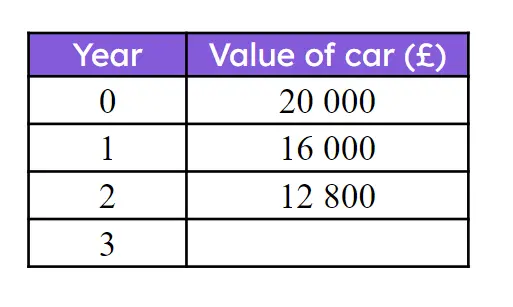Myths about teaching can hold you back


- Year 9
Problem solving with non-linear relationships
I can use my knowledge of non-linear relationships to solve problems.


- Year 9
Problem solving with non-linear relationships
I can use my knowledge of non-linear relationships to solve problems.
These resources will be removed by end of Summer Term 2025.
Switch to our new teaching resources now - designed by teachers and leading subject experts, and tested in classrooms.
These resources were created for remote use during the pandemic and are not designed for classroom teaching.
Lesson details
Key learning points
- If you can spot a sequence, it is possible to predict behaviour.
- By predicting future behaviour, you can plan how to react.
- As with all predictions, it is not a guarantee.
Keywords
Geometric sequence - A geometric sequence is a sequence with a constant multiplicative relationship between successive terms.
Triangular number - A triangular number (or triangle number) is a number that can be represented by a pattern of dots arranged into an equilateral triangle.
Common misconception
If you combine two sequences of the same type the resulting sequence will still be that type.
Adding corresponding terms of two sequences will be good preparation for future units but it also a way to explore what sequences can be generated by combining other sequences.
To help you plan your year 9 maths lesson on: Problem solving with non-linear relationships, download all teaching resources for free and adapt to suit your pupils' needs...
To help you plan your year 9 maths lesson on: Problem solving with non-linear relationships, download all teaching resources for free and adapt to suit your pupils' needs.
The starter quiz will activate and check your pupils' prior knowledge, with versions available both with and without answers in PDF format.
We use learning cycles to break down learning into key concepts or ideas linked to the learning outcome. Each learning cycle features explanations with checks for understanding and practice tasks with feedback. All of this is found in our slide decks, ready for you to download and edit. The practice tasks are also available as printable worksheets and some lessons have additional materials with extra material you might need for teaching the lesson.
The assessment exit quiz will test your pupils' understanding of the key learning points.
Our video is a tool for planning, showing how other teachers might teach the lesson, offering helpful tips, modelled explanations and inspiration for your own delivery in the classroom. Plus, you can set it as homework or revision for pupils and keep their learning on track by sharing an online pupil version of this lesson.
Explore more key stage 3 maths lessons from the Non-linear relationships unit, dive into the full secondary maths curriculum, or learn more about lesson planning.

Equipment
Licence
Prior knowledge starter quiz
6 Questions
Q1.Which of these are triangular numbers?
Q2.Use a calculator to work out the value of $$3^{8}$$. .
Q3.The next term in the geometric sequence 0.4, 2, 10, ... is .
Q4.Which of these could be the first 4 terms in an arithmetic sequence?
Q5.What is the $$n^{\text{th}}$$ term rule for the linear sequence which starts 13, 8, 3, -2, ...?
Q6.Which of these could be the first 5 terms of a sequence with a common second difference? (These are called quadratic sequences).
Assessment exit quiz
6 Questions
Q1.This table shows the value of a car two years after it was made. If the values form a geometric sequence, what is the common multiplier between terms? (You may use your calculator.)

Q2.This table shows the value of a car 2 years after it was made. If the values continue to follow the same geometric sequence, what is the car's value after 3 years? (You may use your calculator.) £

Q3.This table shows the value of a car two years after it was made. Why might this sequence not continue as the same geometric sequence forever?


